I am a climate scientist and geologist and think that climate, geology, and geography are incredibly interesting fields that people deserve to know more about. If you have any questions that you’ve sat with for a while, are just curious, want to know more about future or past scenarios, or even have worldbuilding questions, feel free to ask!
those rock piles are a big nuisance in Iceland, we have our own centuries old waymarkers that can still serve a purpose as long as the tourists stop making new ones
Yes for many cultural and geological/biological reasons stacking stones is not great, but I’d ask that anybody reading this not reopen the stacking rocks struggle session that I prompted once by asking people not to
ohh yeah, dear tourists it's fine to stack rocks on beaches and stuff, like there is a great spot near Harpa, the concert hall, just not on the highlands
When wet, shale can smell like dirt/mud right after it starts to rain. Personally I find this smell to be very comforting
Why did the glaciers of the last ice age seem to affect the North American continent more than Asia? When I look at illustrations of the glaciation during the last ice age, it seems like they reach much farther south than in Asia.
I think I’ll try to limit this to two main reasons:
Location: Western Eurasia is located extremely far north compared to comparable climates in North America, but its climate is moderated by two main things that North America and Central Asia don’t have: the Mediterranean Sea to the southwest, and warm waters from the Gulf Stream to the west. This moderating effect on Europe's climate is what makes it relatively warm and wet today. This temperature impact falls off as you go further east and the climate becomes more continental, as we are well aware, but the incoming air masses from the west have already dropped most of their moisture by the time they reached areas in Eurasia that had otherwise adequate conditions to produce continental glaciation. Glaciation did occur in areas of Asia that were able to trap sufficient moisture at low enough temperatures. This segues nicely into
Topography: As I’ve stated previously, areas that can trap enough moisture to produce increased precipitation did produce continental glaciers. The question of why North America’s glaciers were so much larger can be answered by another phenomenon of geography and climate that we see in the modern day United States: Tornado Alley. The US sees so many tornadoes compared to the rest of the world because it has a perfect set of conditions in its interior. Cold, dry air from the arctic sweeps down over Canada unimpeded by any major mountain range and is funneled south between north America’s Rocky Mountains in the west and Appalachian Mountains in the east. Hot, moisture laden air from the Gulf of Mexico is able to sweep up the middle of North America also unimpeded by any major mountain ranges for the same reason. Lastly, huge storm systems moving in from the Pacific Ocean sweep across the west coast of North America and then crash into these air masses over the center of the country with vast amounts of energy and thus atmospheric instability, allowing the hot and humid tropical air from the south to burst through the cold and dry air from the north and rise rapidly to condense and create large storms with huge amounts of precipitation very deep into a continental landmass. These conditions still existed during the Last Glacial Maximum, and thus were able to bring large amounts of precipitation to the center of the North American Continent, which resulted in widespread continental glaciation. As for Eurasia, due to its many mountain ranges at the edges of the continent (except for the north, which we will talk about soon), no such place with sufficient moisture could sweep deep enough into the continent to produce widespread continental glaciation. Continental glaciation of Eurasia that did exist during the Last Glacial Maximum was located almost exclusively where just enough moisture from the Arctic Ocean and North Atlantic could penetrate into the continent. There is one small and notable exception to this, precisely where a smaller scale version of the conditions I described in North America existed. In modern day southwestern Russia and Ukraine, the perfect cocktail of unimpeded arctic air masses were able to sweep down over northwestern Russia, hot and moist air from the Black Sea was able to sweep inland also unimpeded, and storms from the North Atlantic (though significantly weakened by the time they moved so far inland) all collided and created adequate conditions to extend a lobe of continental glaciation nearly to the Black Sea coast around Crimea. This is unique in all of Eurasia, as the only other thus far unmentioned mass glaciation on the continent occurred in mountains that benefitted from their high elevation and lower temperates, as you can see below.
Show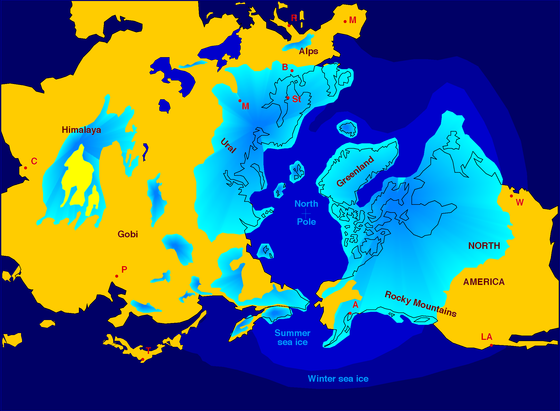
And as a fun and interesting side note, continental glaciation of Northern Europe and that lobe of glaciation that extended nearly to the Black Sea is exactly why the soil of Eastern Europe is so fertile. Rock underneath the weight of the glaciers was ground into a fine dust called loess, and it is then easily blown away. Most of Europe’s loess ended up spread largely across the Eurasian steppe, but the most fertile farmland in Europe that occurs in a large concentration is very specifically in southwest Russia and Ukraine, where loess helped facilitate rainfall in the already more humid air by acting as a condensation point for water vapor in the atmosphere, then falling as precipitation onto the plains surrounding the Black Sea. You can see that impact clearly on this map, and you can also almost perfectly trace along the edges of where glaciation occurred along the Baltic coast by the poorer soil quality, as soil was scoured away by glacial movement. The same process happened in North America, and it’s why the Great Plains and Midwest United States and Canadian Prairie Provinces have so much fertile farmland, while most of central Canada has very little arable land.
Show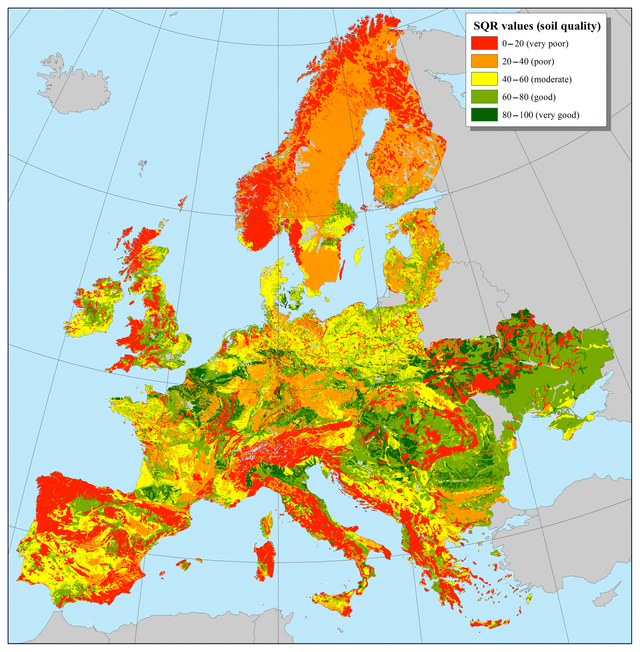
Wowww I had no idea about windblown loess providing nucleation sites for precipitation. That is extremely cool!
Because the world seemed so different in the past, it’s very easy to forget that the planet has almost always been subjected to the same processes we can observe in the modern day!
Think modern day examples– like windblown dust from the Sahara traveling with the winds of the intertropical convergence zone to end up as a primary nucleation point and fertilizer for the Central and South American Rainforests!
Show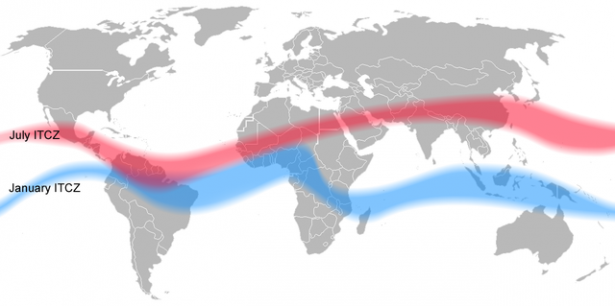
I really appreciate hearing that! I love being thorough and believe that there is no concept in geology or geography or climate that can’t be understood by just about anybody if you don’t use inaccessible scientific language to explain it!
The way you've explained things definitely makes me agree! It reminds me of this cool professor I had years ago for zoology and botany

It depends on the size of the eruption, but I’d be pretty concerned that we aren’t prepared societally for the several years-decades long aftermath that would cause to global climate, especially because of the already difficult to predict changes brought about by human caused climate change. It would take several years at least to accurately determine the best areas to produce food, and even these would be subject to very unpredictable conditions and could fail at any time. Life would majorly suck for a while and it would likely cause massive unpredictable shifts in human migration and in geopolitics
So what would happen if Yellowstone blew
But like... sexually?

- Show

The VOLCEL POLICE are on the scene! PLEASE KEEP YOUR VITAL ESSENCES TO YOURSELVES AT ALL TIMES.
نحن شرطة VolCel.بناءا على تعليمات الهيئة لترويج لألعاب الفيديو و النهي عن الجنس نرجوا الإبتعاد عن أي أفكار جنسية و الحفاظ على حيواناتكم المنويَّة حتى يوم الحساب. اتقوا الله، إنك لا تراه لكنه يراك.

I'm wondering about something that's more a political/history question about the field: So I often hear about how geography was the first modern science. Apparently it fueld many advances in how science is organized, including in other fields. The first modern scientific institution is supposed to have been the royal geographic society in Britain. And many learned people at the time at least new some geology. For example the first science fiction writer Jules Vern packs his journey to the center of the earth full of geological lingo, that his intended readership was expected to understand or at least associate with a feeling of modernity and progress.
So I wondered what's special about geography and geology (why weren't engineering, physics, biology etc. first to get big). And I wonder if the following take sounds plausible: that it was important for colonialism and imperialism, but even before that and more significantly for the enclosure of the commons. Many land surveyors were needed for primitive accumulation.
If you want to take people's communally owned land, which there was a lot of, and divide it up and sell it, you need to be able to point on it on a map. So many surveyors needed to learn the trade and got send out to every last village, forest and field to steal people's land, which they needed to live. Of course, thereby at the same time providing the initial funding for capital and also creating a vast army of hungry and newly landless people migrating to the cities to become workers. And to teach the surveyors, you needed professors and institutions and state funding and all that. And this spilled over to newer fields of the natural sciences and replaced the centuries old focus on theology (and law) at the Universities.
And that's how geography helped to start both modern western science and capitalism. And that's why it was always intertwined with the capitalist hegemony from the beginning. And it still is, isn't it? Then again, there seem to be more Marxists among geographers then in other technical fields. I wonder why.
Wow that’s an awesome question.
It sounds like you have essentially rediscovered the concept of Marxist Geography all on your own, so congratulations and that’s something to actually be proud of. I’ll go into it a little bit and then give you some recommendations from there, because you sound very interested.
Marxist Geography, summarized as shortly as I can, is the study the spatial implications of capitalism, focusing on how economic order and social inequalities, resource distribution, and the organization of space mold each other. Importantly, unlike the study of geography under capitalism which functions to increase exploitation, Marxist Geography seeks liberation by fully understanding the role of geography in perpetuating class struggle. From this understanding we can determine that societies are reflections of their relation to material conditions, and what must be done to achieve liberation.
You’ve already figured this out. You perfectly highlighted how understanding that society is a reflection of its material conditions is a very powerful tool in the hands of people with the ability to impact material conditions within society. That’s why understanding spatial relations through geography was so important to the ruling class in early proto-capitalist societies. These people understood that control over the resources is control over material conditions and thus the society that exists around them (and in the case of the nobility and capitalists, the society that exists for them).
You can’t understand how a watermill works without understanding what powers it. You can’t plan where to put another watermill without understanding where you might find the correct conditions to power it. You can’t use a watermill to grind grain if the labor power to transport grain to the mill is not worth the effort. You can’t use your watermill if somebody was able to determine a more economically advantageous position to build their own and makes yours obsolete. You can’t use your watermill if you failed to properly enclose the commons and somebody else diverted your water source. You can’t sell the grain from your watermill if the town’s collective farming covers their own needs for grain. It goes back even into feudalism, where the landholding class understood that if peasants could freely till their own land, they would labor for only themselves or their immediate community. So what is so important about understanding geography and geology? It’s that engineering, mathematics, biology, physics, or even religion can’t exist isolated from their spatial relationship with the world around them, and the people that are a reflection of that world.
I recommend reading David Harvey’s A Brief History of Neoliberalism, where he talks about exactly this in the modern context!
Thanks, that was a great explanation! I really should read it then. I might not deserve all this credit though, because I already listened to some talks of Harvey on reading Marxs capital on YouTube. It wasn't in a geography context, but something still might have rubbed off. Still your kindness is really appreciated!
He’s also great. Not in any way tooting my own horn but it’s hard to call yourself a Marxist Geographer without being pretty great. I think it’s one of the most radical and universal fields of study under the Marxist umbrella
Will climate change cause earthquakes? Like, I could think of chains of events in the atmosphere that could eventually lead to seismic activity, I'm just wondering if that's like considered a legitimate concern among scientists?
Absolutely. Climate change is already causing earthquakes and it always has. Land that was located underneath continental glaciation during the Last Glacial Maximum is still rising rapidly every year in a process called isostatic rebound, and this can result in earthquakes. This will, of course, increase as more glaciers melt. The most worrisome result from this is not necessarily the size of the earthquakes, but any corresponding landslides caused by rebound or earthquakes that could result in tsunamis.
Additionally, extraction of groundwater or oil can result in earthquakes as the water is removed and ground must subside. The same applies to oil extraction through traditional wells and fracking. We’ve actually created entire new seismic zones just by extracting the resources we then use to create climate change.
Also, and probably mostly important in the longer term than will majorly impact us, we can expect to see increased volcanic and earthquake activity along the edges of many tectonic plates, as the weight from water that used to be sequestered in glaciers over thick, continental crust is redistributed over thin, oceanic crust. The actual physical increase in weight (and thus pressure) can force water deeper into faults and also speed up subduction, thus resulting in increased earthquake frequency. We aren’t sure exactly how much of an impact this will have because it is extremely hard to measure.
Ah, word thank you for the info. Am I correct in thinking that stuff like changes in the ocean's currents and density (due to salinity) will also probably bring about pressure shifts on the sea floor? Like shifting your grip on a stress ball?
Not so much pressure on the seafloor that will matter, but changes in density are almost certainly going to impact currents and heat distribution. Winter in Europe is going to get very, very cold when the relatively warm Gulf Stream can not transfer its warmth to the air as effectively when it is stuck sitting underneath a 0.1°C layer of less dense fresh water that just melted from glaciers in Greenland, which is already measurably happening. It’s pretty much the only place on the planet seeing an average drop in sea surface temperature for that reason.
Show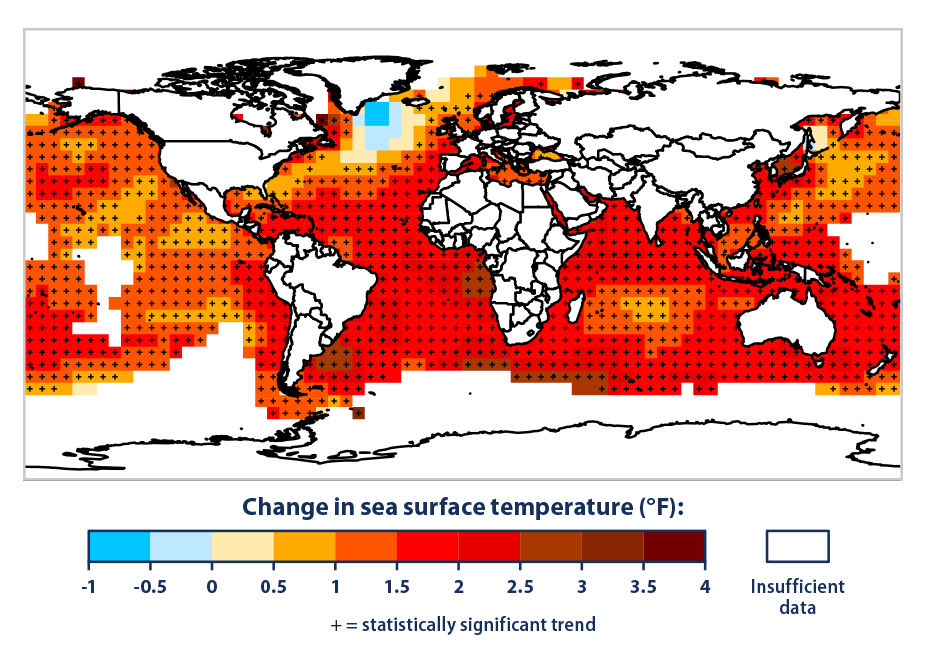
Just as melted ice appears to be flowing south off Greenland, am I looking at a warming effect here caused by the outlets of the Plata, the Kongo, and the Tumen?
If so, why specifically those?
It’s quite possible that’s the reason, and we do know that inland waters in rivers and streams are also increasing in temperature. At least in the cases of the Rio de la Plata and Congo, it certainly appears to be the case. As for the Temur, I think there isn’t as easy an argument to be made, as it drains into a pretty isolated section of sea that would naturally be prone to heating more easily. The Congo looks like the strongest case, especially because it has no estuary. That being said, I’m not going to commit to an answer because I don’t have the data myself.
If I wanted to touch the oldest rock formation on the surface where would I go? I’m pretty sure there’s 4 billion year old rock north of Hudson Bay, but I’m wondering if there’s anywhere else
Really it depends on what you consider a rock and the surface.
If you consider meteorites to be rocks, some meteorites that fall to earth are older than our solar system, so you’d have to find those, and they are pretty rare. I’m pretty sure we have some in a few museums, and if you got the right degree I bet they’d let you touch it.
If you consider only rocks from earth, the oldest rock on the surface somewhere is probably on the surface of the moon, as it is now very commonly believed that both the moon and Earth formed via a glancing collision of proto-Earth with a Mars-sized protoplanet named Theia. Since the moon and Earth are made of the same stuff, there are plenty of rocks on the moon from this time that are not subject to erosion like rocks on Earth. We also have some samples here on Earth that you don’t even need a degree to touch, let alone a spacesuit. If you consider all rocks that were technically part of earth, this might be your next best bet.
If you consider only rocks that formed on Earth as its own, separate astronomical body AND are on the surface of other Earth rocks, you’d probably have to actually go to the moon. Because there were so many large impacts from other astronomical bodies during the early solar system, many fragments of Earth rock were thrown back out into outer space, many of which landed on the moon since it is the next closest large object. Most rocks that did form on the early Earth have since been recycled by Earth’s geologic processes, which do not exist on the moon. So while Earth was still so hot that nearly the entire surface was molten rock with just a few floating islands of solid rock, some impact likely knocked some of that solid Earth rock onto the surface of the juuuuuuuust cool enough surface of the moon to now be the oldest remaining Earth rock. This, unfortunately, you’d need to do extensive exploring and sampling of the moon to find. Not a great option. But MAYBE one of these can be knocked back onto Earth by an impact event that launches it back from the moon, and I am not joking. We have meteorites from Mars that we have collected on Earth, so this is not impossible.
If you only consider rocks that formed on Earth, are currently on the surface of Earth, and have never left Earth since its formation, then you are likely correct, and it’s in the Northwest Territories. It’s an ancient core material of one of the oldest even mountain ranges that formed on Earth, and it’s called the Acasta Gneiss Complex. This rock formation is just about 4 billion years old. Our solar system is only 4.6 billion years old. These rocks you can touch as much as you want, and they sit freely on the surface!
According to Wikipedia there’s a boulder from the Acasta complex in front of the National Museum of the Native American in DC, might go try and touch that.
The pictures from the blog you linked look gorgeous, would love to get out there
It’s actually beautiful country. I know a few people who have had the privilege of going and it is just stunning!
And if you go to DC to do that, you can go to the Smithsonian and touch a fragment of the planet Mars as well!
(Not a geologist warning)
Not the oldest, but a neat one: Banded iron formations. Probably formed because early life evolved photosynthesis, releasing large amounts of oxygen which precipitating iron out of the early oceans. Also "extinct" because the conditions for it to form probably will never exist on Earth again.
Stromatolites are somewhat similar. Refers to both current day living guys, and their ancient fossil ancestors. Both form layered mats and are some of the earliest fossils. I think there's earlier fossils but they're a good mix of old and decently large.
My cousin met him in an airport once actually but I don’t think they got any kind of sample
More of a sociology question than geology, but how come major urban centers in 19th century Britain tended to be so close to major coal reserves (or literally on top of) but far from major rivers? Why didn't the rise of watermills push populations closer to rivers to better make use of water power?
I think the best answer to this question is probably to start by looking at what powers watermills and its scalability. Yes, water, but more specifically water with a good enough flow rate to provide enough sufficient power. In Britain, most of the areas where those flow rates exist are located in less densely populated areas due to a variety of reasons (climate, poor soil, mountainous, etc.). These areas were thus more suited for the smaller scale, early industrial development that revolved largely around processing animal/plant products like food or textiles, which happened to be exactly what Britain excelled at, thus helping to kickstart proto-industrialization. Because Britain also did mass colonization and had substantial global trade networks, fairly early on it became more important for city development in Britain to be located in places that had easy access to these goods.
Secondly, as coal power became more readily available, transportation for it did not become as readily available at the same rate. Mass transportation of goods had to start from scratch when there were no train lines, so the most efficient way to develop was nearby a resource that was needed. Human settlement tends to occur near our most important resources, and in places like Britain, where water is not so scarce that most places are ok to settle, human settlement will next tend to occur in places with advantageous geographic/geologic conditions. (If this topic interests you, I suggest reading books by David Harvey, a Marxist geographer)
Third, Britain was just very fortunate that many of its coalfields also happen to exist in areas that were already settled for other advantageous reasons. This is why that although there are some places in Britain that have been devastated by the move away from the coal industry, you see many more of these places in the United States. The difference is that many of the devastated, once primarily coal industry cities/towns in the US were only settled post-colonization pretty much exclusively due to their direct access to coal and ability to move it to distant population centers.
Oh I am reading it, I asked the question to get a different perspective and maybe some more general knowledge.
That makes sense, was a question exactly suited to the book haha!
What is the most underrated facet of each these fields (geology, geography, and climatology)?
Like, what's the big thing that gets overlooked or which doesn't get nearly the attention it deserves because it gets dwarfed by other things? (Basically "I don't care about your tyrannosaurus, give me your ankylosauruses!")
Geology– THE DOCTRINE OF UNIFORMITY Most people have no idea that they know so much about geology already. The doctrine of uniformity is essentially the idea that most of what you can observe in the present day has also occurred in the past, and you can expect comparable formations across time to have undergone the same processes to form!
Geography– More Marxists need to study Marxist geography. It is probably the most interesting part of the fields of study under Marxism and has so much story telling power, especially for people who are finding certain concepts around intense Marxist literature hard to digest. It takes so much energy to understand Marxist concepts in the abstract, but you don’t have to start there! You can start with concepts you fundamentally understand and critique and then use them to help teach you Marxism! It’s very, very cool and very helpful for beginners! Many people already understand some of its key concepts with zero effort at all.
Climate– This one is just more of a “did you know?” fact, but most people don’t consider that sea level rise from climate change is not only just water being physically placed into the ocean from glaciers that had it sequestered away. Sea level rise will also occur due to thermal expansion as the seas heat up and the same amount of water must expand in volume. It is a quite significant factor in sea level rise, and is roughly half of all sea level rise that we have already observed
What changes would you make to modern video games (e.g. Minecraft) to make their worlds more geologically accurate?
One of my biggest pet peeves is games like Civilization series not having realistic climate zones based on the geography of the generated world. For example, a desert where you would assume that warm water currents and prevailing winds would produce enough moisture to not be a desert. I’m not a programmer, but I know that it actually wouldn’t be too hard to set a few conditions that help the map generation know where to place certain climates much more accurately.
As for games like Minecraft or maybe the recent Legend of Zelda games, I think that the inaccuracies are part of what makes it fun and interesting. Minecraft has come a long way as well, for example in certain cold mountain biomes they have implemented world generation that produces wide, rounded, deep valleys that indicate prior glaciation.
How do you feel about Dwarf Fortress world generation in regard to geology?
Just after giving it a cursory glance, I can see that they included many types of rock and have gone as far as including rocks that form in very specific contexts, so I am pretty sure they did their research! You don’t accidentally include igneous intrusions in your game when most people do not know they exist.
Rocks have less “funny looking” characteristics to them as just a rock sample since rocks are just amalgamations of the minerals they are composed of. There are some funny looking minerals that will look the same anywhere, but rocks will only normally look funny based on their weathering or formation.
That being said, I think pillow basalt formations look pretty funny!
Show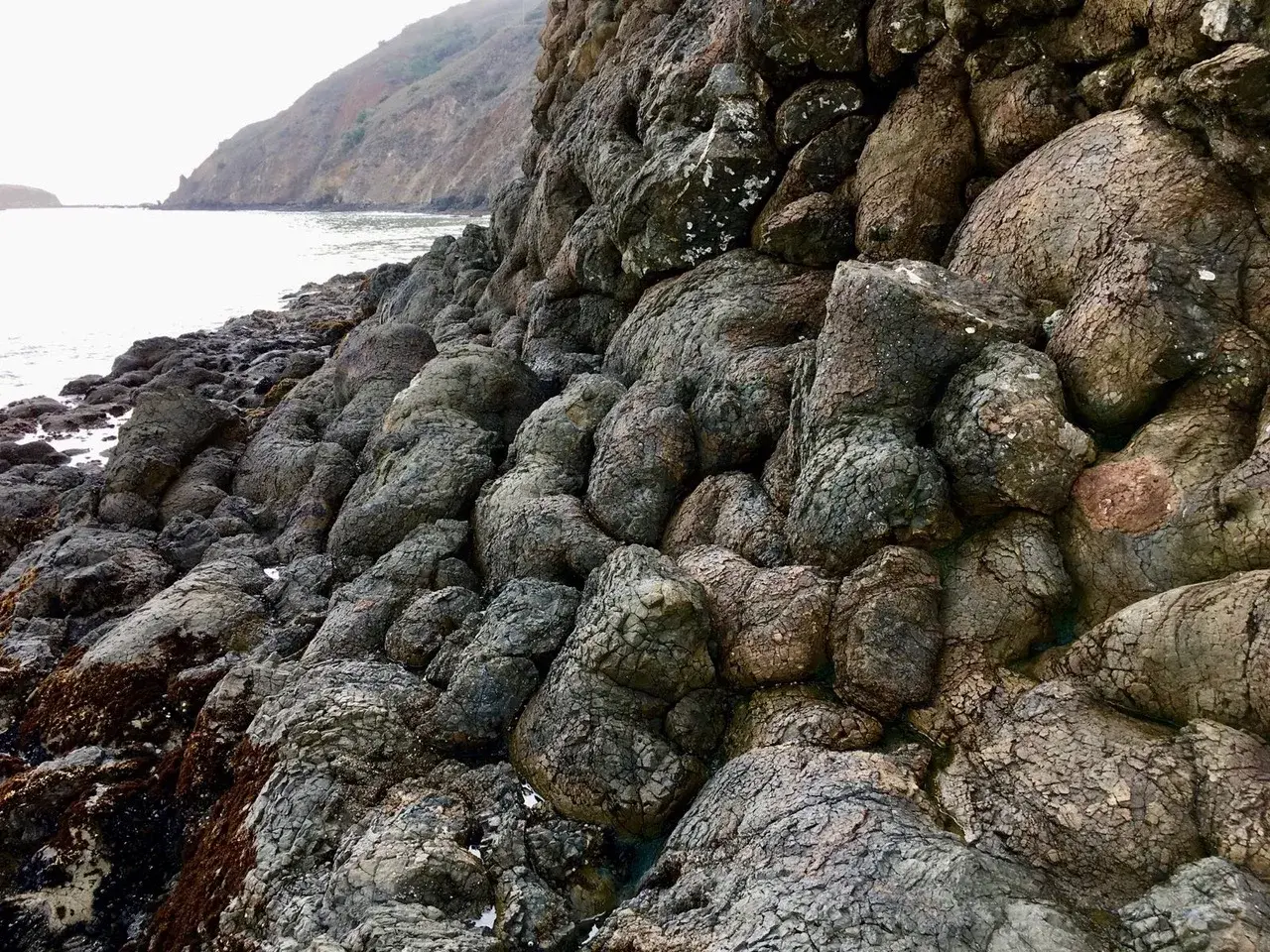
They’re formed by lava immediately contacting water so it forms into a ball because the outermost layer immediately solidifies. It’s kind of like piping out macarons or icing, but you are applying constant pressure to the piping bag, can’t stop, and can only move around the tray you are piping them onto
Those are pretty cool. I will remember these and tell everyone I know. Thanks.
I reread this and it may not be clear that I'm not being sarcastic.
In your professional opinion, which rock is the best?
It’s very hard to say, but my serious answer if I had to pick one is probably coal, considering that it is probably one of the rarest rocks in the universe
Imagine a parking lot and a grocery store. Cars can come in and out, there's spaces for each little car, and it's purpose is to hold cars. The acid intermediary is that parking lot. The metal attractor is that grocery store. Cars are electrons. When there's lots of empty spaces it's easy for cars to pull in, so as long as the connecting road is open you can fill up the parking lots, when it's full the opposite is easier. The parking lot itself doesn't change no matter how many cars are in parking spots, so cars can come and go freely as long as the connecting roads are open.
This is a cool question!
Firstly, not all batteries are rechargeable, as we all know. Single charge batteries use a one-time chemical reaction that physically changes the internal structure of whatever is in the battery to produce electricity via chemical reaction. Rechargeable ones work in such a way because the chemical reaction that occurs within the battery that is reversible. Basically, the electrochemicals within the battery store potential energy, but are locked into their energy storing state by electrons simply having nowhere to go. When you connect the battery to something you’d like to power, it allows the chemical reaction to begin, which releases electrons thus allowing them to flow to whatever it is you are providing power to. Once the internal chemical reaction has completed, the battery no longer has power. To recharge it, you must reset the chemical reaction, and this is done by sending electrons back into the battery. The electrons find their way back in almost perfectly, which is why rechargeable batteries have longer lives cumulatively than single use batteries, but rechargeable batteries slowly lose efficiency over time.
Recently (past couple years) we've started getting tornado warnings where I live and have even had like 2, is that linked to climate change?
It's also been way drier in that time and we have burn notices when we used to be so bad with humidity
Certainly it’s either a result of climate change, bad record keeping, or both. Without knowing vaguely where you are though it’s impossible for me to give you a potential explanation as to how/why, since tornadoes are very complex meteorological processes that typically require a few special conditions to form.
Ah ok! So first read the “Topography” section of another comment I made on this post. There I explain what “Tornado Alley” is and how tornadoes form.
These conditions can technically exist in many places, but North America specifically has the perfect set of conditions. As climate is changing, Tornado Alley has made a sharp shift eastward over the past 100 years. It used to be mostly located over Texas, Oklahoma, Kansas, and Missouri, but has since been pushed to be mostly over Kentucky, Tennessee, Mississippi, Alabama, and Georgia. Likewise, all of the corresponding elements that result in tornadoes have become more prevalent in the surrounding areas, including a few stray systems from the Midwest potentially reaching into Pennsylvania.
Pennsylvania is also in a pretty interesting spot to watch, especially eastern Pennsylvania, because during correct conditions mid-summer through mid-fall, you can get an usually strong and consistent build up of hot, moist air from the coast trapped up against the mountains in the center of the state, and then an overlying cold airmass from up north. When met with atmospheric instability, these can create conditions necessary to spawn tornadoes.
You’re probably just going to have to worry mostly about way hotter summers
















